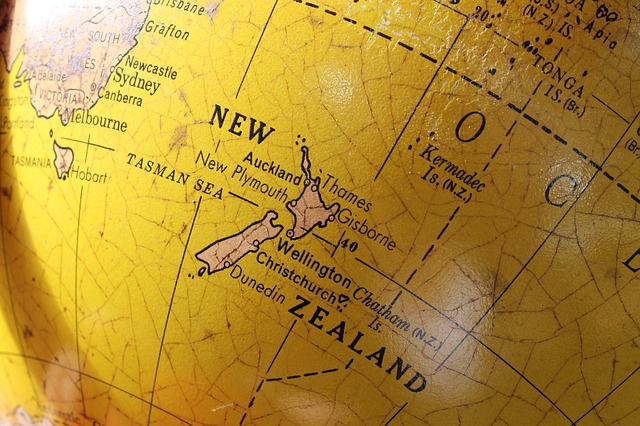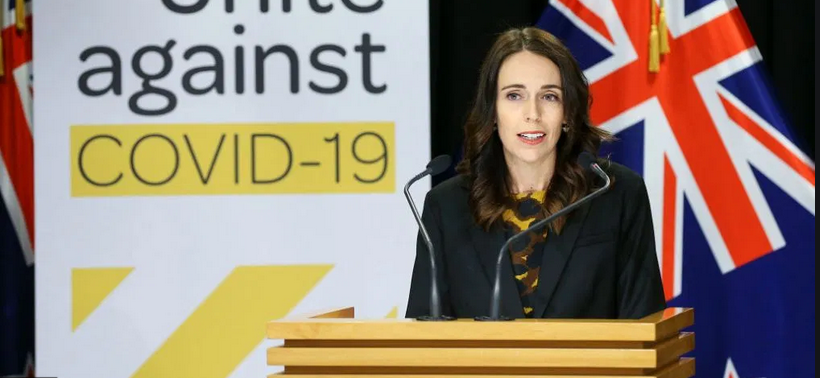Diego Santagati, New Zealand.
New Zealand’s first reaction to the coronavirus pandemic began on the 24th of January when its Ministry of Health set up a monitoring team. As the virus grew overseas, travel restrictions were placed upon affected countries, such as China and South Korea, and mandatory instructions to self-isolate were placed on overseas travellers coming into New Zealand. This response was mostly reactive: New Zealand only banned flights from Iran after having its first confirmed case from a person travelling from that location. It was not until March 19 that New Zealand closed its border to all but its own citizens. From there, the cases inside the country increased, and by the time New Zealand went into “Alert level 4 – lockdown” there were 283 cases. Alert Level 4 introduced mandatory social distancing measures which heavily limited usual social and economic activities. Parliament was adjourned, and like many businesses, government meetings and functions were either suspended or conducted via digital methods.
It has been five weeks since the lockdown at the time of writing and there have only been roughly 145,000 conducted tests, 1485 confirmed and probable cases, and 20 deaths from COVID-19. Widespread testing has been lacking with only roughly 3% of the population having been tested. Despite this, terms such as “effectively eliminated” have been used to describe the situation in the media. The New Zealand Government now considers the situation to be such that they have downgraded to “Alert Level 3 – Restrict”. The most significant change here is the ability for some businesses to reopen and relaxed social distancing measures. However, this has not been a smooth transition. There have been increases in breaches of social distancing measures with large crowds gathering at some locations. Downgrading to level three is a result of the reprioritization of the economy which been influenced and supported by the economically focussed rhetoric of the media. This relaxation of conditions runs the risk of increasing the spread of the virus. In the absence of strong state-led initiatives and enforcement of social distancing conditions, some indigenous Māori communities have resorted to setting up their own checkpoints to protect vulnerable communities.
As part of its economic response to the pandemic, the New Zealand Government announced a multi-billion dollar economic response package. The package is predominately focused on business and employment, with some minor concessions for workers. The centrepiece of this package, instead of a Universal Basic Income or other direct-to-the-individual scheme, was a $9-12 billion dollar wage subsidy scheme. This scheme fails to cover the entire scope of businesses and employment situations, such as short-term employees and contractors. It also requires employers to actually adopt the scheme in order for their employees to receive money, as opposed to just saving wage costs by making them redundant. Additionally, it only requires businesses to pay a minimum of 80% of their employees’ wage. This means workers all over New Zealand are facing reduced incomes for themselves and their families. Businesses also benefitted from the inclusion of over a combined $12.4 billion for Government backed loans, tax loss carry-back schemes, business tax changes, business consultancy support, and changes to the Companies Act— changes which, unlike households, allow companies to place their debts into hibernation, and removes interest and penalties from those who do not pay their taxes on time. Other economic measures which have been instituted separate from the package include, cutting the official cash rate, and a $900 million-dollar loan from the government to the partially privatised national air carrier, Air New Zealand. Combined, all these schemes amount to billions in foregone government tax revenue, and in savings for the business sector. All of this is compared to the meagre $500 million and $27 million in increased assistance to the historically underfunded and overburdened health care and social services sectors respectively. The package did include a $2.8 billion expansion to the welfare system with an added permanent $25 increase to the unemployment benefit, and a doubling of the Winter Energy Payment. In reality, this amounts to a weekly increase of around $65 for an individual or $100 dollars for a couple. Compare this with the $585.00 per employee a company receives in wage subsidies.

While the full economic consequences of coronavirus have yet to be felt, hundreds of thousands have either already become unemployed, had their pay or hours forcefully reduced, or been illegally compelled to take leave. The unemployment benefit has increased by 16%, and in just the space of a single two-week period, 17,700 additional people signed up to the unemployment benefit. This does not include everybody who is unemployed, under-employed, or has applied for the unemployment benefit and is kept lower by the fact those who are now essentially unemployed are merely “employed” on a wage subsidy for the time being. While these people are still employed, it is dubious whether the wage subsidy will continue through the entire economic fallout. Companies have announced further planned layoffs of tens of thousands of workers, and in the long-term hundreds of thousands of jobs are predicted to be lost in the tourism sector alone. In a recent survey of New Zealand renters, two thirds had their incomes reduced by a third, while 92% of these renters were still paying full rent. 68% of households are now cutting spending or dipping into their savings; one in 10 tenants is expected to end up in debt to their landlords and a quarter are expected to have to go into debt to pay their bills. This situation is undoubtedly going to increase household stress in a country with already high rates of poverty, food insecurity, domestic violence, and suicide.
In the face of this dire situation for countless workers there has been no general mortgage or rent freeze. Some minor concessions from the government have been a conditional six-month mortgage payment deferral, a freeze on all rent increases for six months, and prohibitions of any no-cause evictions for three months. Given the lasting implications the coronavirus and economic depression are going to have, these measures are hardly sufficient. In actuality, the lack of concessions combined with the economic package amounts to nothing more than a wealth transfer to businesses and landlords. New Zealand, in comparison to other capitalist countries, has been more proactive with less severe consequences from this virus. However, these responses make explicit the capitalist neo-liberal thinking within the New Zealand political parties that allows governments to prioritise businesses and their own interests over workers and their needs.

